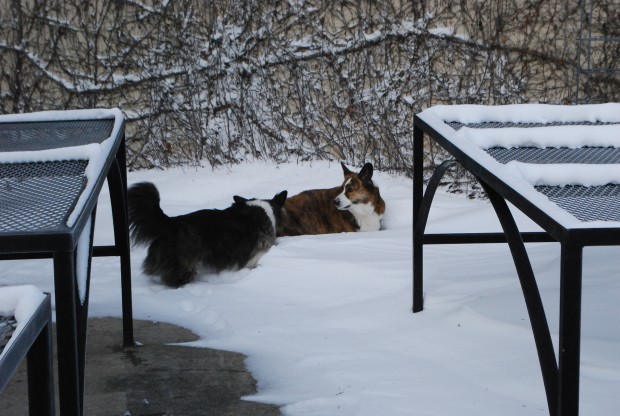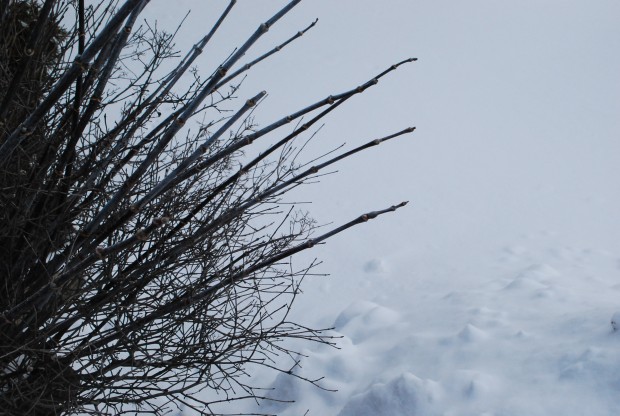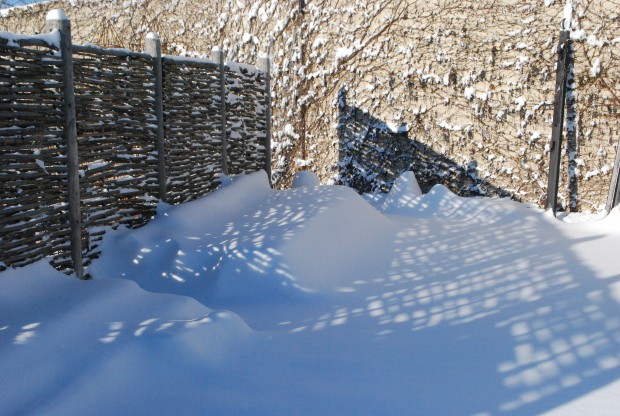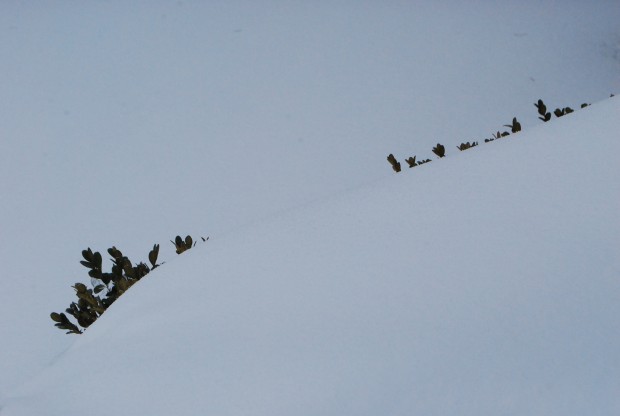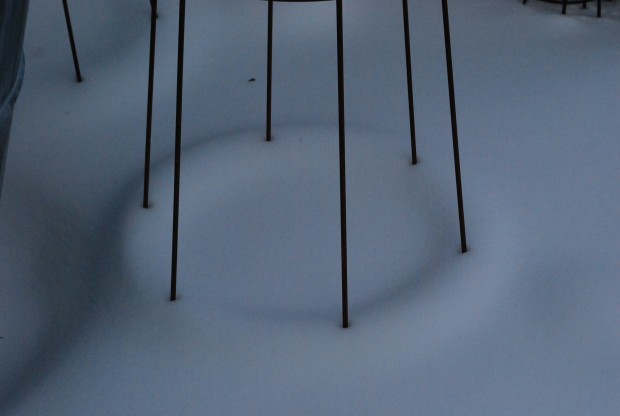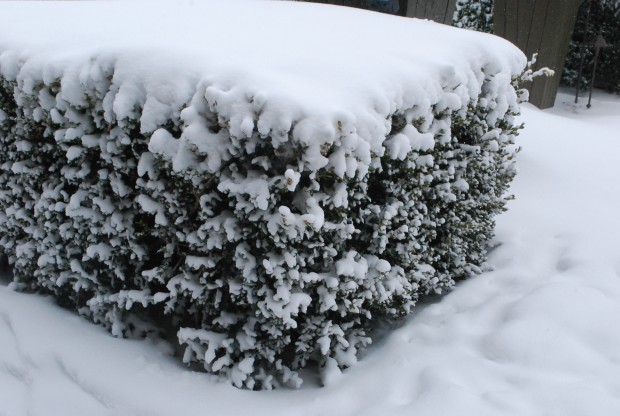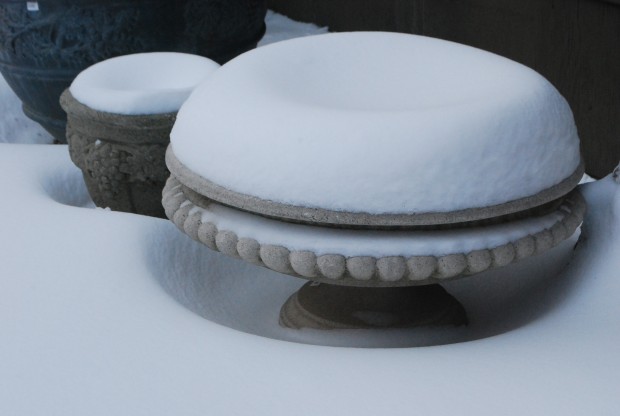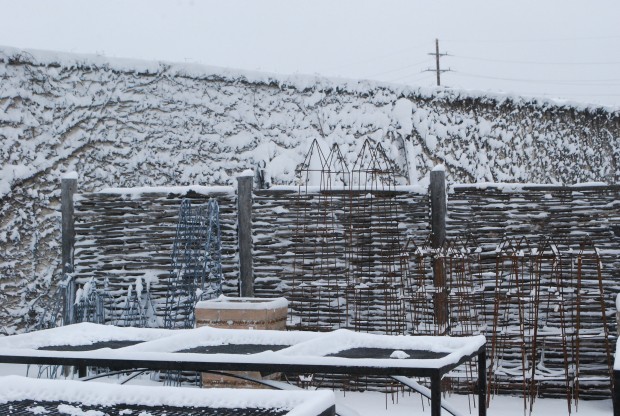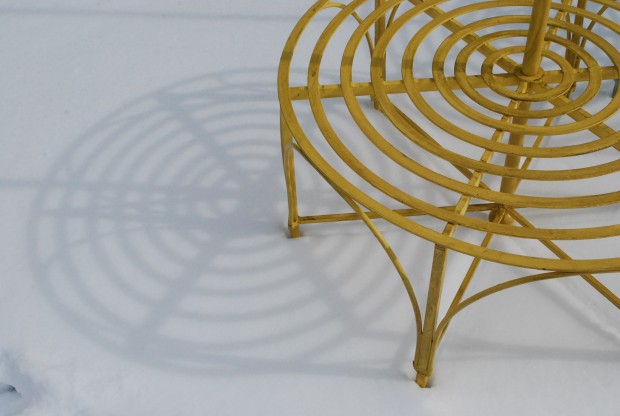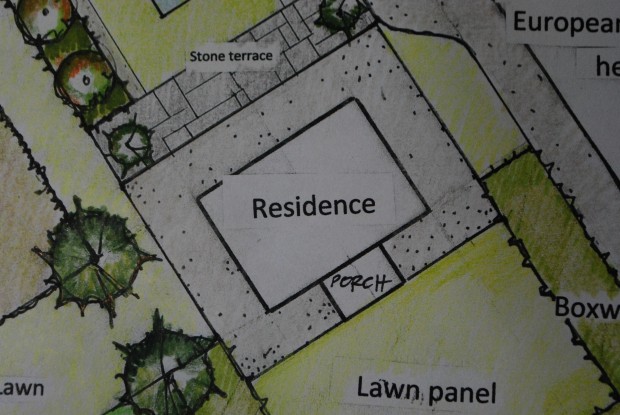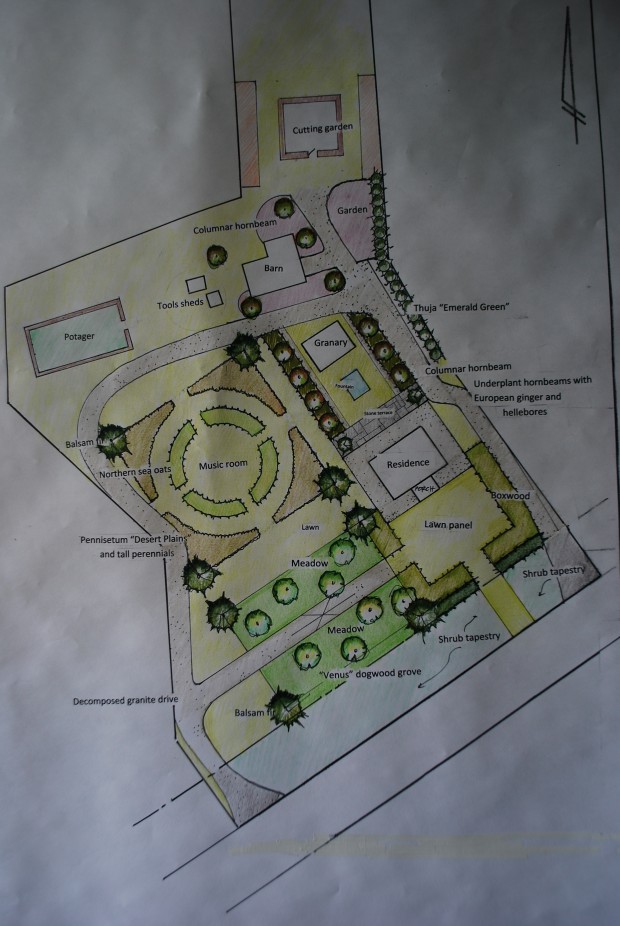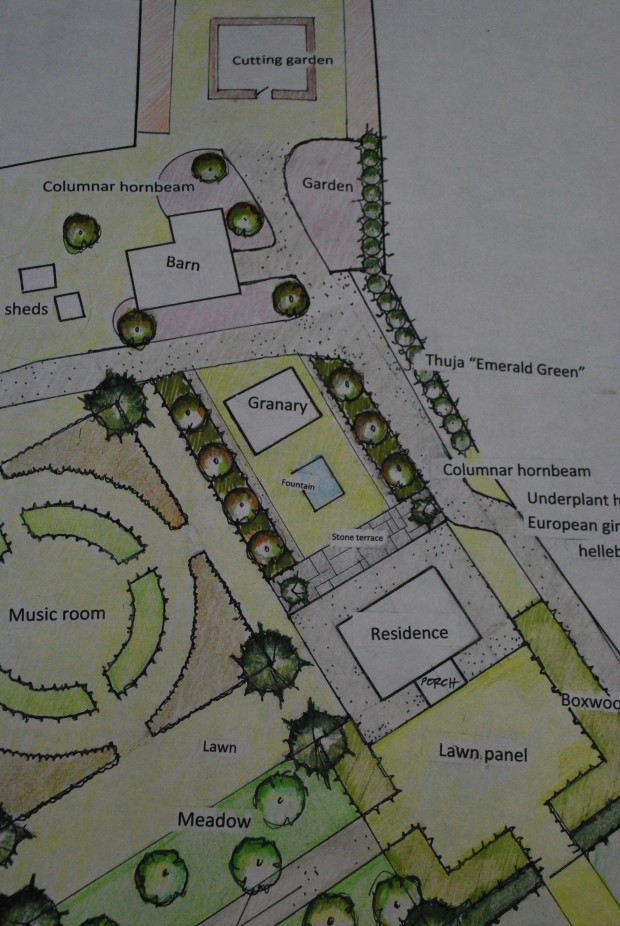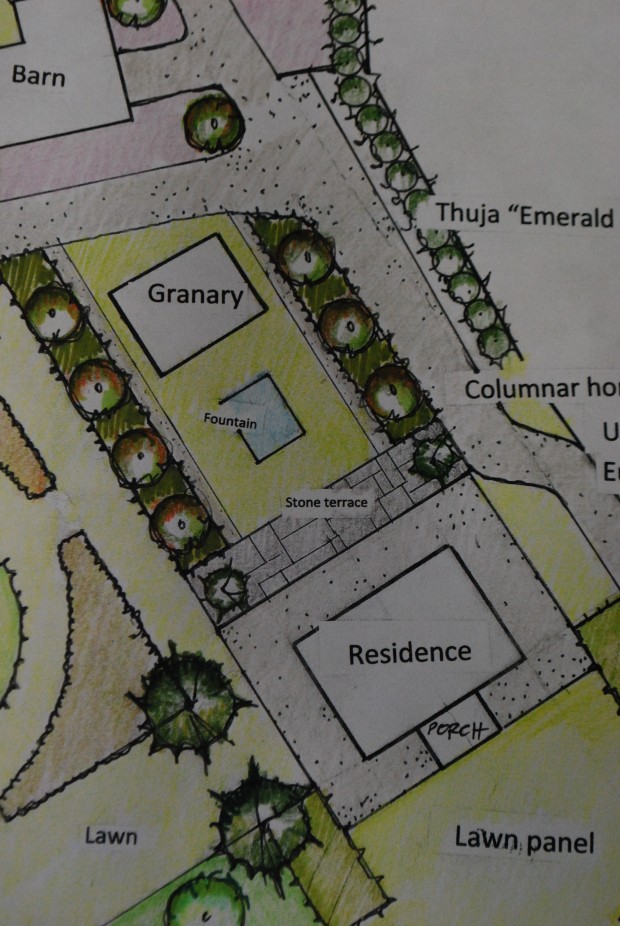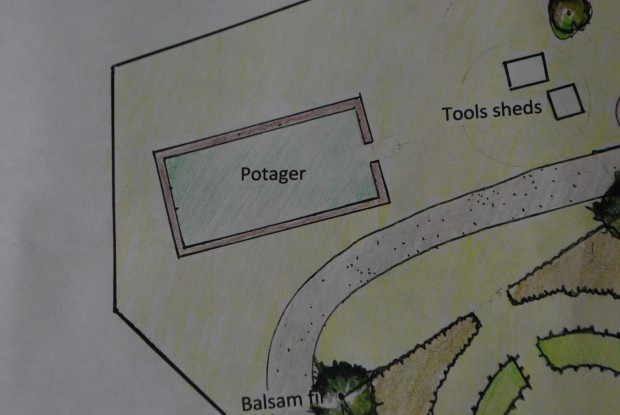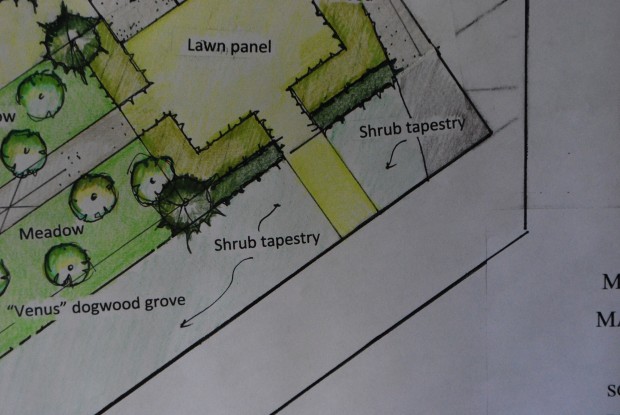
Six years ago I submitted landscape plans to a client with an island home. Five years ago, they brought the property next door, and added on to their existing home. Four years ago, we installed a landscape per a second plan. This property was 75 minutes away from us. Despite the difficult logistics, we did install a landscape from start to finish. In 2010, I attended a summer party given by the client-for all of the contractors that worked on their project, and their families. That was my last visit-until earlier this week.
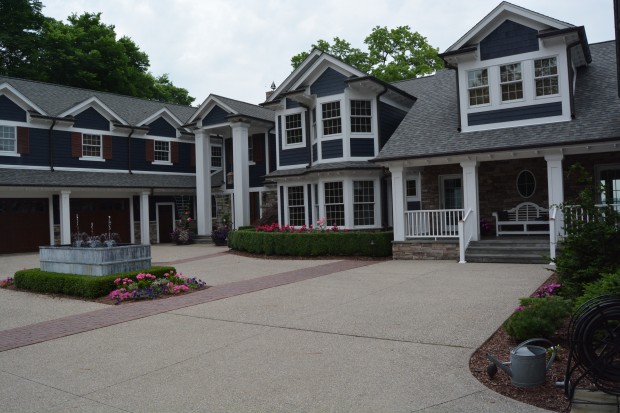
The original plan called for 3 curved steel planter boxes that would fit the curve of a blue stone terrace on the lakeside. They decided earlier this year to go ahead and have them made.The delivery of the boxes was a chance to see how the landscape was settling in. What a pleasure it was to see that the plants looked healthy and robust.
 Every square foot of the vegetable garden was being used. The in ground beds had been planted with strawberries, asparagus, and herbs. The raised beds were planted with all manner of vegetables. Vegetable gardens are working gardens, the purpose of which is to grow food. This sounds easy enough, but growing vegetables successfully is hard. The plants themselves are not always so beautiful. Roses and tomatoes are grown for the flowers and fruit, not for the beauty of the plant. It seems like bugs and disease have a special affinity for vegetable plants. This vegetable garden with raised beds is an orderly space, even if the vegetable plants themselves are not.
Every square foot of the vegetable garden was being used. The in ground beds had been planted with strawberries, asparagus, and herbs. The raised beds were planted with all manner of vegetables. Vegetable gardens are working gardens, the purpose of which is to grow food. This sounds easy enough, but growing vegetables successfully is hard. The plants themselves are not always so beautiful. Roses and tomatoes are grown for the flowers and fruit, not for the beauty of the plant. It seems like bugs and disease have a special affinity for vegetable plants. This vegetable garden with raised beds is an orderly space, even if the vegetable plants themselves are not.
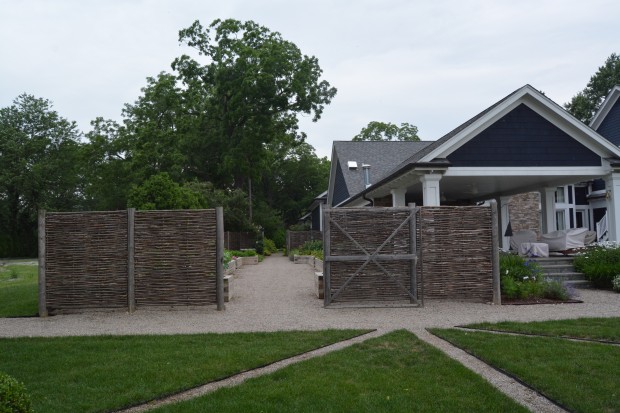 This garden is enclosed, primarily to keep the wildlife at bay. But the fencing adds much to the look of the garden. The gate is an exact reproduction from a family vegetable garden in Italy. The landscape is very much looking like it belongs to them.
This garden is enclosed, primarily to keep the wildlife at bay. But the fencing adds much to the look of the garden. The gate is an exact reproduction from a family vegetable garden in Italy. The landscape is very much looking like it belongs to them.

vegetable garden

gate latch
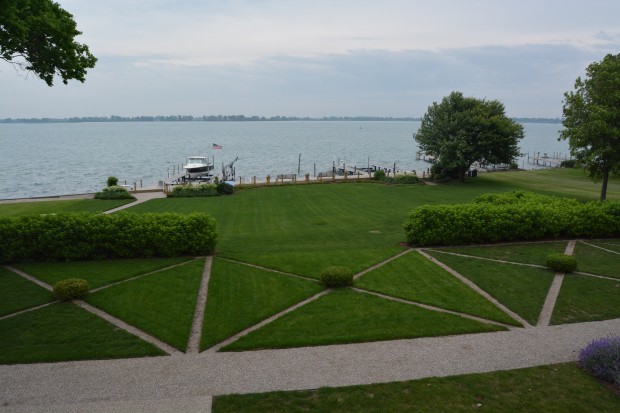 We look after the landscape during the course of installing a big project like this. But the day comes when the installation is finished, and a client has to take over the care and maintenance. The areas that require the most care are small-manageable. The landscape was designed for clients that like to use their outdoor spaces for entertaining.
We look after the landscape during the course of installing a big project like this. But the day comes when the installation is finished, and a client has to take over the care and maintenance. The areas that require the most care are small-manageable. The landscape was designed for clients that like to use their outdoor spaces for entertaining.
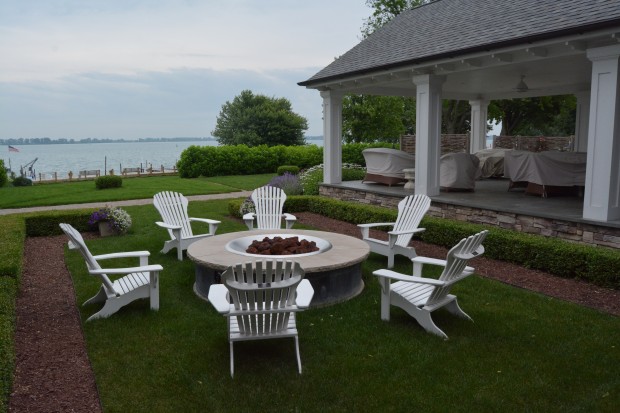 I vividly remember when this particular spot was a muddy and mucky mess. Installing the fire pit in late November-challenging. Today, this space gives no hint of that construction history.
I vividly remember when this particular spot was a muddy and mucky mess. Installing the fire pit in late November-challenging. Today, this space gives no hint of that construction history.
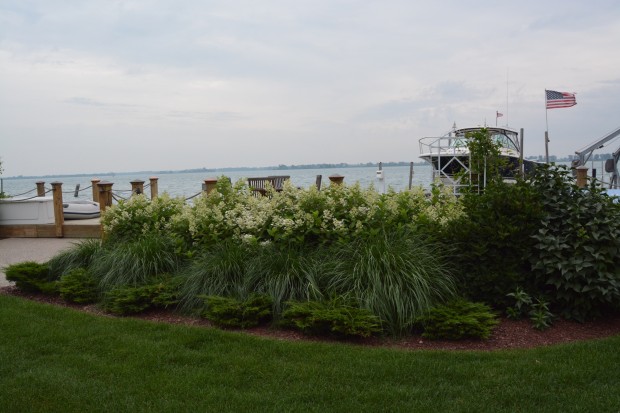 This dockside garden was planted after my work here. It is simple, and has great texture and mass.
This dockside garden was planted after my work here. It is simple, and has great texture and mass.
 We did do a lot of work grading here. My clients did want a lawn area that was easier to navigate. The long steel step risers are only 4 inches in height. This is a landscape feature that adds interest, and is very little maintenance.
We did do a lot of work grading here. My clients did want a lawn area that was easier to navigate. The long steel step risers are only 4 inches in height. This is a landscape feature that adds interest, and is very little maintenance.
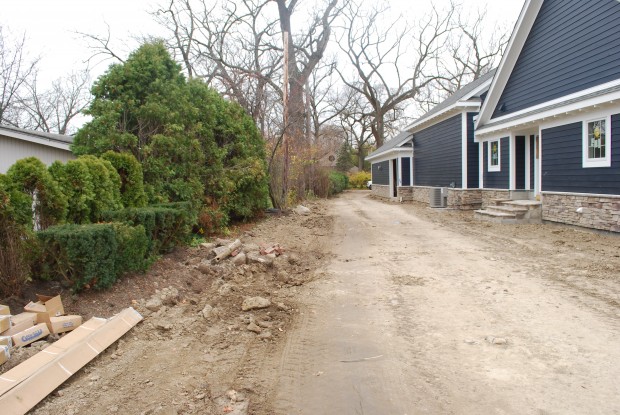
This shady garden area was a major roadway for construction vehicles of all kinds, for almost 2 years. I was worried we would have a devil of a time getting anything to grow. When we were finally ready to plant this side, the soil was just about impossible to dig. We incorporated generous amounts of compost into the top 8 inches of soil-with pickaxes and the forks on our front end loader. This picture was taken in November of 2009.
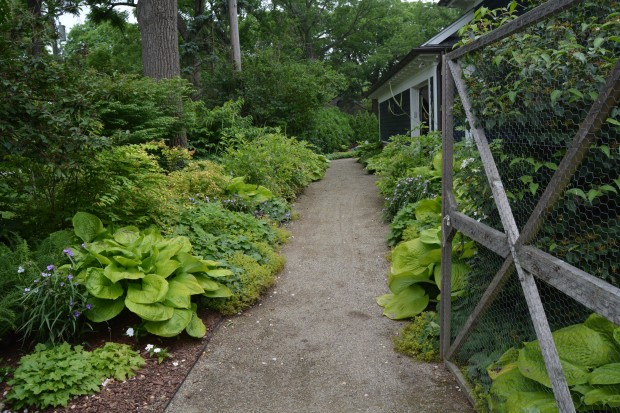
This picture was taken a few days ago.
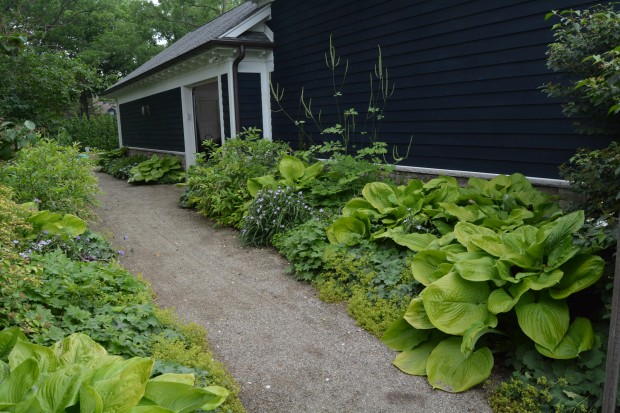
It takes time for a landscape to begin to come into its own. This one is well on its way.

